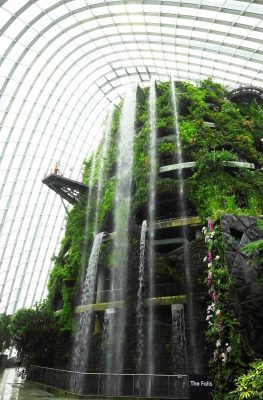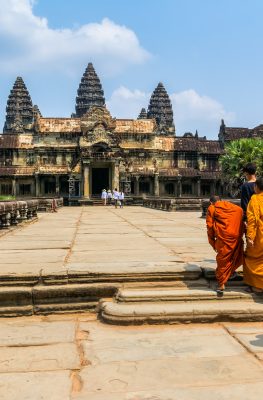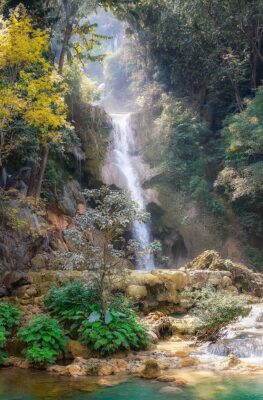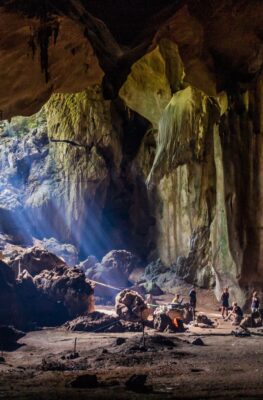Published on October 25, 2010
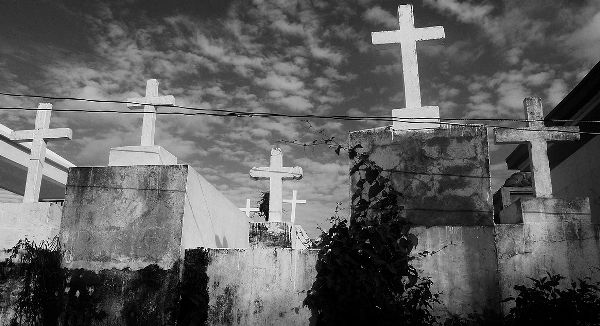
South East Asia is a hot pot of intersecting cultures and religions, and perhaps as a result, is rife with myth and superstition. Aspects of Buddhism, Hinduism, animism and astrology all feature in Asian ghost lore, from which emerge myriad spooks and spirits and plenty of haunted places. Following are five of the spookiest spots in Southeast Asia.
1.Teuk klang, Bangkok, Thailand
Thai for ‘empty building’, the teuk khlang is one of Bangkok’s most visible haunted ‘houses’. With enviable view of the Chao Phraya River and city skyline, it’s one of many derelict buildings dotted throughout the Thai capital. Officially known as the Sathorn Unique Tower it’s a 49-storey luxury high-rise development that fell into ruin in the Asian financial crisis of the late 90s.
It’s forbidden – and potentially dangerous – to enter the teuk khlang, but the creepiness of it is more than evident from afar. One online account reports stray dogs living in the bottom floors and sharp drops from holes and off balconies. Best viewed from State Tower, Saphan Taksin BTS or Sathorn pier, the teuk khlang makes for a fascinating photo study and is arguably spookiest in daylight when its empty balconies and deteriorated state are most apparent.
2.Old Changi Hospital, Singapore
Unlike the Raffles Place Ghost – the creepy hoax that became an internet star – Old Changi Hospital’s spooks are believed by many Singaporeans to be authentic. Originally army barracks, these disused Changi Village buildings were occupied by Japanese soldiers in WWII and used to detain POW’s. In the 50s, the barracks were converted into a hospital which has now moved locations, leaving the old site deserted.
It’s illegal to enter the grounds now, but daredevils and ghost hunters have ensured OCH is one of the most thoroughly documented ghost sites in Singapore. Eye-witnesses report wailing (most likely from the restless souls of POWs and patients), floating spectral forms and sudden, unexplained drops in temperature. Nearby Changi Beach and the chalets there are also said to be prime spirit-sighting spots. Aside from regular spirits, the much-feared female ghost, pontianak, is said to inhabit the nearby woods.
3.Poliklinic Cheras, Kuala Lumpur, Malaysia
Originally the Lady Templar Hospital, this disused building was once dedicated to the treatment of tuberculosis patients. Later converted to a general hospital, the Poliklinik Cheras was abandoned in the 1980s and is now just an empty shell that gives visitors the creeps. One photograph of the building shows the outline of a ghostly figure in one of the windows, invisible to the photographer at the time.
Also said to be haunted is the Victorian Institution, or ’ VI’. Situated atop an old Chinese cemetery – the VI dates back to 1929, its statuesque clock tower is one of KL’s most beautiful landmarks. A prestigious English school, the VI campus was once a Japanese POW camp and students claim it’s one of the most haunted sites in Malaysia. Paranormal reports range from eerie noises to students being possessed by malevolent spirits. Ex-students also report seeing a figure hanging by a rope from a tree in the school grounds.
4.Jakarta History Museum, Jakarta, Indonesia
At one time it was the official seat of Dutch administration, this stately colonial building traces the origins of the Indonesian capital from prehistoric days, with more than 23,000 artifacts currently on display. The macabre history of this ex-city hall lends credence to its reputation as one of Jakarta’s creepiest sites – the square in front of the museum (the Taman Fatahillah) once was the site of public hangings.
In the absence of any ghostly activity, this is still a worthwhile spot to visit, with street vendors, museums, historic monuments, colonial architecture and the opportunity for hours of people-watching. The historic buildings here also make for great photos – the capture of ectoplasm on film always a possibility.
5.Baguio City, Philippines
The city of Baguio in Luzon is full of spooky spots. A picturesque city of pine trees, mountain ranges and waterfalls, it’s a popular destination for domestic tourists escaping the heat of the lowlands, and home to several prominent universities. Though Baguio was settled as recently as 1900, its history provides fertile ground for ghost stories – the city was bombed by the American allies during WWII and in 1990 an earthquake claimed more than 1600 lives.
The scariest sites here include the rose-hued Baguio Cathedral, bombed during WWII and said to be haunted by the ghosts of the nuns and civilians who perished there. Then there’s the classic ‘haunted house’-style Laperal White House, whose resident family were killed by soldiers. Witnesses claim to hear footsteps and load moaning, while the ghost of a young girl has been spotted outside the front door.
Probably the most famously haunted site in Baguio is the Teachers Camp – its status as ghost playground is uncontested. Set in the mist-veiled forests of Leonard Wood Road, the cottages there have set the scene for countless encounters will the paranormal, from mysterious crying to footprints appearing from nowhere.
Bek van Vliet is a freelance travel writer and blogger living in Bangkok, with her 2 cats.



